Kingsgrove Branch:
Schnap Electric Products Blog
Schnap Electric Products Blog Posts
Fuse Box
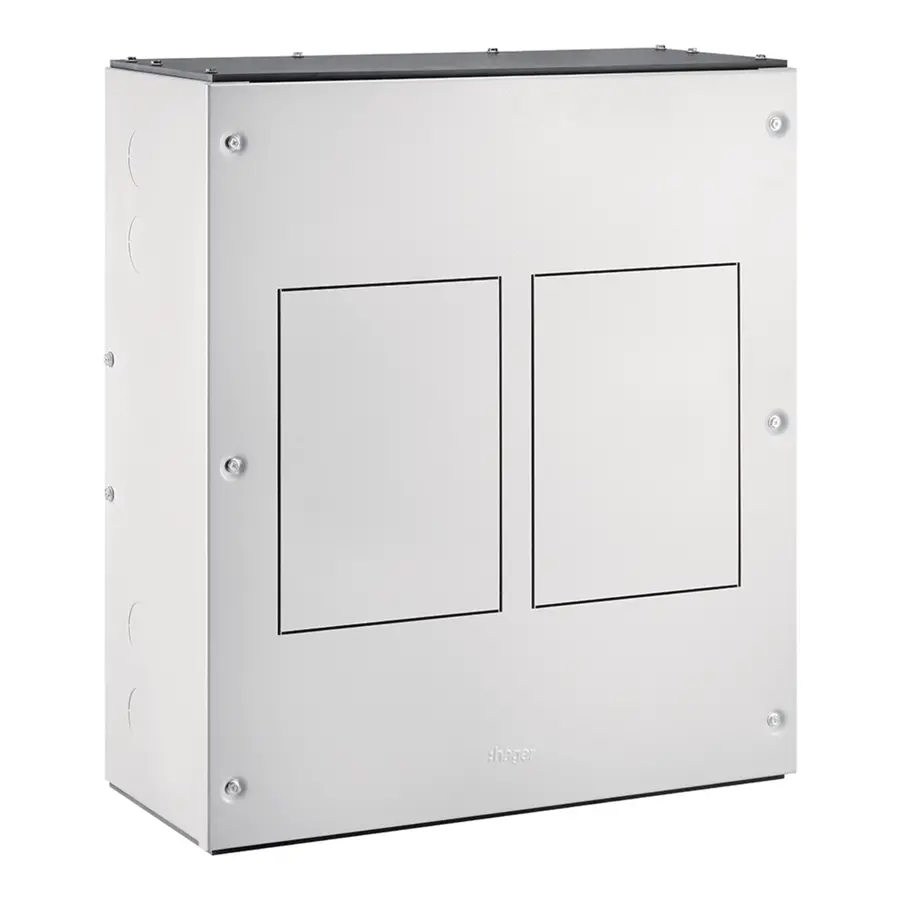
G'day! If you live in an older Aussie home – one of those classic brick veneers or a post-war weatherboard – you might not have a modern switchboard with all those schmick, flicky switches. Instead, you might have the "grandad" of home electrical safety: the old ceramic fuse box.
It's that row of white, ceramic, pull-out holders, usually tucked away in a cupboard or a black tin meter box on the side of the house. For donkey's years, this was the standard. But in a modern home full of high-power appliances, that old fuse box isn't just daggy – it can be a fair dinkum, serious safety hazard.
What is a Fuse Box, Exactly?
A fuse box is the old-school version of a modern switchboard. Its one and only job is to protect the electrical wiring in your walls from overloads and short circuits, which can cause fires.
It does this using 'fuses' – a sacrificial weak link. Inside each of those ceramic holders is a single, thin strand of fuse wire. If you plug in the kettle, the toaster, and the air fryer all at once, you'll draw too much power. Before that current can melt the wires in your wall, that little fuse wire gets red hot and melts first, 'blowing' the fuse and cutting the power.
The Problem: Why Your Old Fuse Box is a Ticking Time Bomb
So, it protects against fires, what's the drama? The problem, mate, is that an old fuse box is a knackered design from a bygone era. It has two massive, dangerous flaws.
1. The 'She'll Be Right' Fire Risk
We've all been there. A fuse blows at 8 PM on a Friday. You've got no fuse wire. It's bloody tempting to just "fix it" by shoving a bit of fencing wire, a nail, or a screw in the holder to get the power back on.
This is catastrophically dangerous.
Doing this completely removes all protection from that circuit. That bit of fencing wire can carry a massive amount of current, so instead of the fuse blowing, the wiring inside your wall becomes the fuse. It will overheat, melt its insulation, and can easily start a house fire.
2. It Does NOT Protect You From Electric Shock
This is the most critical bit. A fuse box only has fuses. Fuses are designed to stop fires.
They do not have Safety Switches (RCDs).
A Safety Switch is a modern device that detects the tiny amount of electricity leaking out of a faulty appliance or wire – the kind that passes through a person – and cuts the power in a fraction of a second. A Safety Switch is what saves you from a fatal electric shock. Your old fuse box doesn't have this, leaving your family unprotected.
The Solution: A Full Switchboard Upgrade
If your home still has an old fuse box, it is long overdue for a safety upgrade. The solution is to get a licensed electrician to replace the entire board with a new, modern switchboard.
A pro will rip out those old ceramic fuses and install a new enclosure with:
- Circuit Breakers (MCBs): These are the modern, resettable switches that replace fuses. No more fiddling with wire in the dark – just flick the switch.
- Safety Switches (RCDs/RCBOs): These are the life-savers that protect you. Modern standards require these on all circuits in your home.
This is 100% NOT a DIY Job. No Mucking Around.
This cannot be stressed enough, mate. Your fuse box is the heart of your home's 240V system. It's an extremely dangerous environment.
In Australia, it is illegal and potentially fatal for anyone other than a licensed electrician to open or work on a switchboard. Don't be a galah – this is a job strictly for a qualified professional.
A licensed professional won't just slap in any old gear. They'll use high-quality, compliant components sourced from a trusted electrical wholesaler to ensure the job is done right. A good electrical wholesaler is a tradie's best mate, providing the gear that meets our high Australian standards.
As one of Australia's most comprehensive electrical wholesaler and supplier networks, Schnap Electric Products stocks the lot for the professional installer. They've got all the modern, life-saving RCBOs, circuit breakers, and new enclosures that a qualified professional needs to rip out that old fuse box and replace it with a safe, modern, and compliant switchboard. For a job this important, the pros rely on quality gear from a supplier like Schnap Electric.
MIDI Fuse Holder
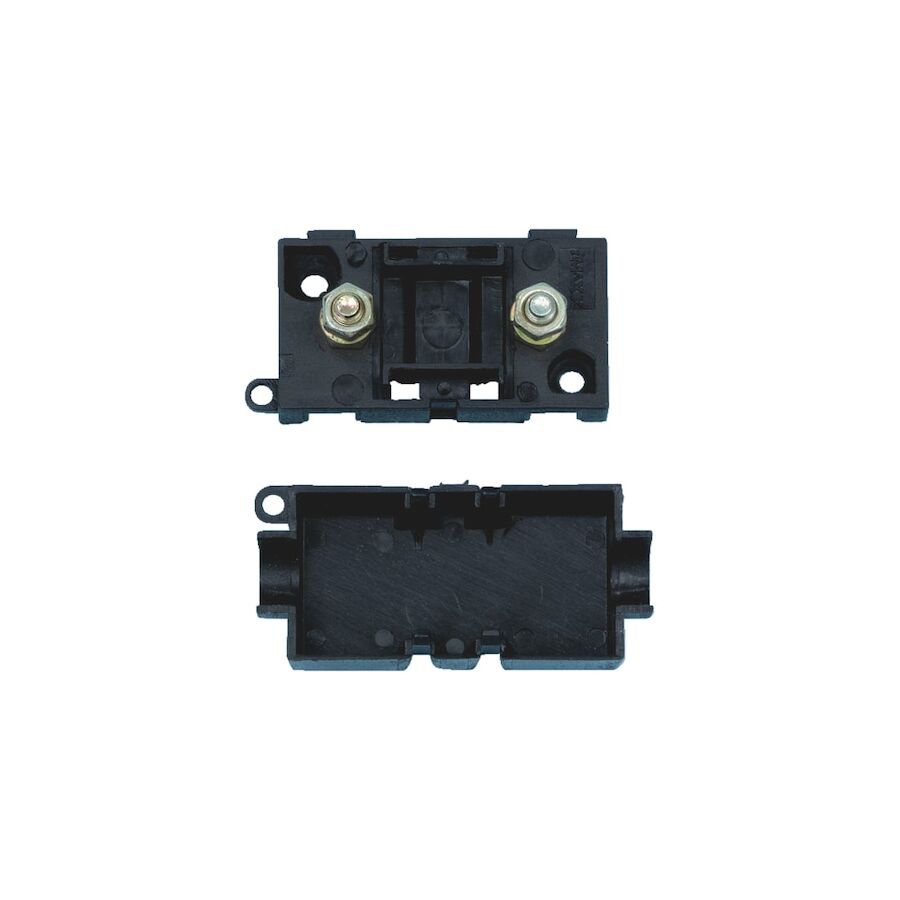
G'day! If you're a keen 4WDer, caravanner, or boatie, you know that fitting out your 12V system is a fair dinkum serious job. You're running some grunty gear – maybe a big fridge/freezer, a 1000W inverter, or a dual-battery system – and you need to protect your expensive kit (and your whole rig) from a catastrophic short circuit.
That little plastic blade fuse you use for your radio? It's just not going to cut the mustard, mate. It'll melt before you've even finished your beer. When you're dealing with serious current (30A to 150A), you need a heavy-duty solution. But those massive ANL fuses can be overkill and take up a heap of space.
This is where the 'Goldilocks' of 12V protection comes in: the MIDI fuse holder.
So, What is a MIDI Fuse Holder, Exactly?
A MIDI fuse holder is a compact, heavy-duty, bolt-down fuse block designed for high-current 12V and 24V DC systems. It's the perfect "middle-man" – way tougher and more reliable than a large blade fuse, but much more compact than a massive, chunky ANL fuse holder.
It's designed to hold a MIDI fuse, which is a tough little bolt-in fuse that can handle the hard yakka of high-current loads, protecting your thick, expensive wiring from overheating and potentially starting a fire.
The Ripper Benefits: Why It's the Pro's Choice
Tradies and auto electricians love this bit of kit for a few massive reasons:
- It Handles the Grunt: Standard blade fuses are knackered at 30A or 40A. A MIDI fuse holder is the perfect solution for protecting those high-draw circuits, like the main feed for your dual-battery system or your inverter.
- Rock-Solid Connection (No Rattles!): This is the big one. A blade fuse can rattle loose on a rough, corrugated road, cutting power to your fridge (talk about a nightmare!). A MIDI fuse bolts into the holder, and your cables (with crimped lugs) bolt onto the studs. It's a 100% vibration-proof connection that will not let you down.
- Compact and Safe: It's much smaller than a big ANL fuse block, making it a ripper for squeezing into a tight engine bay or a crowded battery box. Plus, a good MIDI fuse holder comes with a sturdy cover, fully insulating the live terminals and keeping them safe from accidental shorts.
Where You'll See These Heavy Hitters Used
- 4WD Dual-Battery Systems: The number one use. Perfect for the main fuse between your starting battery and your DC-DC charger.
- Caravans and Camper Trailers: For protecting the main battery bank, the solar charge controller, or a high-power inverter.
- Boats and Tinnies: Ideal for protecting high-draw gear like trolling motors, anchor winches, or main distribution panels.
- Heavy-Duty Audio Setups: For safely fusing the main power line to your big amplifiers.
A CRITICAL Note on Installation (Don't Be a Galah!)
This is not a "she'll be right" job. You're dealing with high-current 12V power, which can still cause a serious fire if you muck it up.
- Use the Right Cable: You must use thick, heavy-gauge cable (often 8 B&S or bigger) that's rated to handle the current.
- Crimp it Right!: The ring terminals (lugs) on the end of your cable must be crimped with a proper, heavy-duty hydraulic or indent crimping tool. A dodgy crimp with a pair of pliers will create resistance, get stinking hot, and eventually melt.
- Fuse for the Wire, Not the Gear: This is the golden rule. You choose a fuse size to protect the cable from catching fire, not just the appliance.
From 12V Rigs to 240V Homes
Using the right, high-quality component like a MIDI fuse holder is the mark of a professional, safe 12V installation. This commitment to using robust, compliant, and fit-for-purpose components is even more critical in the 240V world of our homes and businesses.
Licensed professionals won't risk their reputation (or your safety) on dodgy gear. They source their components from a trusted electrical wholesaler to ensure everything is compliant and built to last. A top-tier electrical wholesaler understands the needs of a pro, from the smallest fuse to the largest switchboard. As one of Australia's most comprehensive electrical suppliers, Schnap Electric Products stocks the lot. While they provide all the essential 240V gear like circuit breakers and safety switches, they also carry a massive range of professional-grade 12V/DC components, including high-quality MIDI fuse holders, battery lugs, and crimping tools that a qualified auto electrician or professional installer needs. For a safe, reliable job – whether it's on your ute or on your house – the pros start with quality gear from a supplier like Schnap Electric.
Fuse Holder
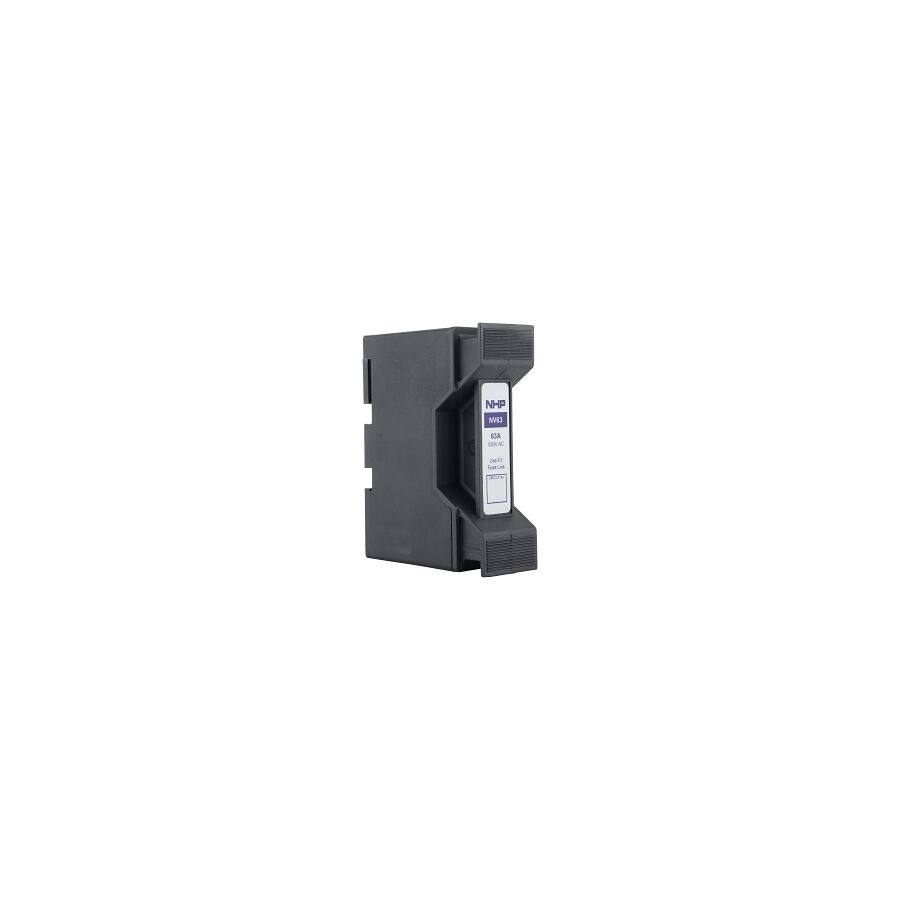
G'day! We've all heard about fuses – those little sacrificial heroes that blow themselves up to save your expensive gear or stop a fire. They're a fair dinkum essential in any electrical circuit, from your ute to your house.
But a fuse is useless on its own. It needs a safe, secure home to live in. That's where the humble fuse holder comes in. It might not look like much, but a good quality fuse holder is just as critical for safety as the fuse itself.
So, What is a Fuse Holder, Exactly?
A fuse holder is an insulated casing that a fuse clicks, slots, screws, or bolts into. It's the "socket" for the fuse.
Its job is simple but absolutely vital:
- It holds the fuse securely in the electrical circuit, ensuring a rock-solid, reliable connection.
- It keeps all the live, high-current metal bits safely contained, protecting you from getting a nasty shock and stopping the fuse from shorting out against anything.
The Main Types You'll Find in Australia
You'll come across a few different types, all designed for different jobs.
1. The 12V/Automotive Fuse Holder
This is the one most Aussies are familiar with, and it's generally safe for DIY.
- Inline Fuse Holder: This is that little plastic "torpedo" or rubber boot that sits in the middle of a red wire (usually near the battery). It's the go-to for protecting a single accessory, like your driving lights, UHF radio, or camp fridge.
- Blade Fuse Holder (Fuse Block): This is the ripper of a solution for a proper 12V setup. It's a block with multiple slots for those standard blade fuses you have in your car. It's the schmick, professional way to protect all the different circuits in your 4WD's dual-battery system, caravan, or tinnie.
2. The Old-School 240V Ceramic Fuse Holder
If you live in an older Aussie home, you'll know this one. It's the white, ceramic plug in your old "fuse box" that you have to pull out. The whole ceramic plug is the fuse holder, and it holds the fuse wire.
3. Panel/Chassis Mount Fuse Holder
You'll see these on appliances, machinery, or on a boat's switch panel. It's usually a little screw-cap that you twist to open, revealing a small glass or cartridge fuse inside.
Why a Quality Holder is Fair Dinkum Critical
It's tempting to buy a cheap, dodgy fuse holder, but it's a massive mistake, mate. A cheap one can cause you a world of pain:
- Poor Connections: A weak spring or a bad terminal will create a loose connection. This gets hot, can melt the holder, and is a major fire risk.
- No Weatherproofing: In your 4WD's engine bay or on your tinnie, you need a fuse holder with a proper, waterproof (IP-rated) seal. A cheap one will let in water and dust, causing corrosion and a guaranteed failure right when you're in the middle of nowhere.
- Vibration: A cheap holder will rattle apart on a corrugated road, cutting power to your fridge. You'll be left with warm beer and ruined food.
The CRITICAL Safety Warning: 12V vs. 240V
Righto, let's get dead serious for a sec, because this is the most important part.
- For 12V (DIY): Are you wiring up an inline fuse holder for your 12V setup? Go for your life. Get a good one, use the right crimp tool, and you'll have a ripper, reliable job.
- For 240V (PROS ONLY): The absolute second you are talking about the ceramic fuse holder in your house, you MUST STOP.
In Australia, it is illegal and extremely dangerous for anyone other than a licensed electrician to perform any work on a 240V switchboard. If you've still got these, it's fair dinkum time for an upgrade.
A Professional Job Needs Professional Gear
When a licensed electrician turns up to upgrade your old fuse box, they're going to replace it with a modern, safe switchboard. They'll use high-quality, compliant circuit breakers and safety switches, all sourced from a trusted electrical wholesaler. They know that a professional job relies on professional gear.
As one of Australia's most comprehensive electrical wholesaler and supplier networks, Schnap Electric Products stocks the lot for the professional installer and the serious auto electrician. They've got a massive range of high-quality fuse holder options, from heavy-duty 12V blade fuse blocks to industrial panel-mount holders. And, of course, they stock all the modern, compliant circuit breakers and RCBOs that a qualified professional needs to replace that old, daggy ceramic fuse system and make your home safe. For a job done right, the pros rely on a supplier like Schnap Electric.
Inline Fuse
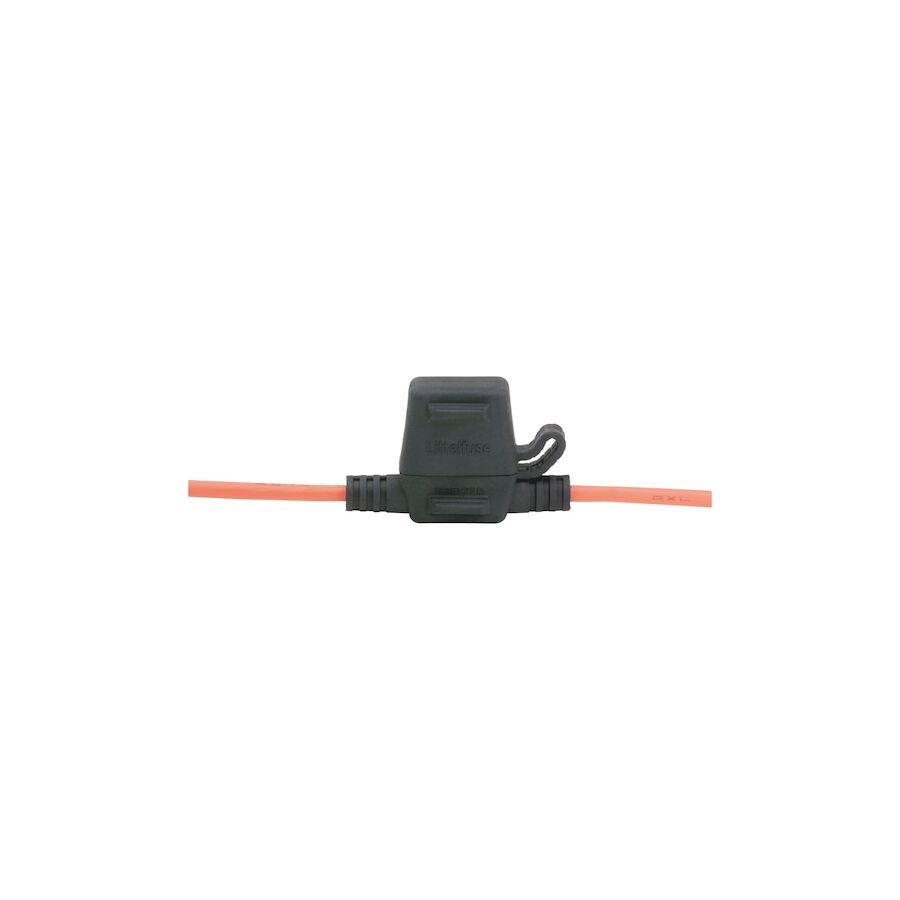
G'day! You're in the shed, finally getting around to wiring up those new driving lights on the ute, or running power to the camp fridge in the back of the 4WD. It's tempting to just run a wire straight from the battery and call it a day, but that's a fair dinkum recipe for a disaster.
All it takes is that one wire rubbing through on the chassis, and you've got a dead short, a melted wire, and at worst, a car fire. To do the job safely and properly, you must protect the circuit. And the simplest, most effective way to do that is with an inline fuse.
So, What is an Inline Fuse, Exactly?
An inline fuse is a simple fuse holder that's installed "in the line" of a single positive power wire. It's usually a small, weatherproof (you hope!) plastic casing that holds a standard blade, glass, or cartridge fuse.
It's a sacrificial lamb. A deliberate weak link. Its one and only job is to be the first thing that blows if something goes wrong, instantly cutting the power and saving your accessory (and your vehicle) from catastrophic damage.
The Ripper Benefits: Why It's a Non-Negotiable
For any 12V or 24V accessory you add to your rig, an inline fuse is not optional; it's essential.
- It Protects Your Gear: It stops a power surge from frying your expensive new UHF radio or camp fridge.
- It Prevents Fires: This is the big one, mate. If your power wire shorts to the vehicle's body, it will draw a massive amount of current. Without a fuse, that wire will get red hot, melt its insulation, and can easily start a fire. An inline fuse blows in a split second, stopping this before it happens.
- It's Cheap Insurance: A $5 fuse holder can save you from thousands of dollars in damage. It's a no-brainer.
Where to Use This Ripper Bit of Kit
An inline fuse is the go-to for protecting any single, add-on 12V/24V circuit, including:
- Driving lights and LED light bars
- UHF radios
- Camp fridges
- Air compressors
- Sound systems and amplifiers
- Any accessory you're wiring into your 4WD, caravan, tinnie, or motorbike.
How to Install One (The Golden Rule)
This is a classic DIY job for any Aussie with a bit of know-how, but there is one rule you cannot muck up:
The fuse MUST go as close to the power source (i.e., the battery terminal) as possible.
Don't be a galah and put the fuse holder way down the line, near the accessory. Why? Because the wire itself is what you're protecting. If you put the fuse at the back of the ute, that whole five-metre run of wire from the battery is completely unprotected. If that wire shorts on the chassis, it'll still catch fire.
The inline fuse must be the very first thing on the wire, within about 15-20cm of the positive battery terminal.
A CRITICAL Safety Warning: 12V vs. 240V
Righto, let's get dead serious for a sec. This entire guide is for extra-low-voltage (12V/24V) DC systems in your vehicle or boat. This is a common and safe area for DIY, as long as you're careful.
Under no circumstances should you ever attempt to mess with your home's 240V mains wiring. It is illegal and extremely dangerous in Australia. All 240V work must be done by a licensed electrician.
A Professional Job Needs Professional Gear
A licensed professional knows that a safe installation depends on high-quality, compliant components, whether it's for 12V or 240V. They won't use cheap, dodgy fittings that will fail in six months. They source their gear from a trusted electrical wholesaler.
As one of Australia's most comprehensive electrical wholesaler and supplier networks, Schnap Electric Products stocks the lot for the professional installer and the serious auto electrician. They've got a massive range of high-quality 12V gear, including weatherproof inline fuse holders, blade fuses, and crimp terminals. And, of course, they stock all the compliant 240V components—from safety switches to power points—that a qualified professional needs to do a job on your home safely and reliably. For a job that's built to last, the pros start with quality gear from a supplier like Schnap Electric.
Fuse Block
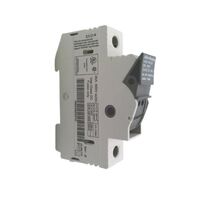
G'day! You've decided to kit out your 4WD or ute with all the good gear – a fridge, a UHF, some driving lights, maybe an inverter. Your first thought is to just run a heap of wires straight off the battery, each with its own dodgy little inline fuse.
Before you know it, your battery terminal looks like a proper bird's nest, you've got no idea what wire goes where, and it's a fair dinkum nightmare to find a fault. It's not just ugly, mate – it's unsafe.
There is a much, much better way to do it. If you want a schmick, professional, and safe 12V setup, you need a fuse block.
So, What is a Fuse Block, Exactly?
A fuse block (or 'fuse box') is the central distribution hub for your 12V power. Think of it as a mini switchboard for your 4WD, caravan, or tinnie.
Its job is simple: it takes one, large, main power cable from your battery and safely distributes that power to multiple, smaller accessories (like your fridge, lights, etc.), with each new circuit protected by its own individual, easy-to-find fuse.
The most common type you'll see in Australia is the blade fuse block, which uses the same standard, colour-coded plastic blade fuses that are in your car's main fuse box.
The Ripper Benefits: Why Bother with One?
Upgrading from a messy pile of inline fuses to a central fuse block is a no-brainer.
- It's Neat as a Pin: This is the big one. It turns that rat's nest of wiring into a clean, professional-looking installation. All your power wires run neatly to one spot.
- Massive Safety Boost: Instead of having unprotected wires all over the shop, every single circuit is properly fused and protected, right from the source. It massively reduces your fire risk.
- Easy Fault Finding (This is a Lifesaver!): If your spotlights stop working, you don't have to go hunting for a hidden inline fuse in the engine bay. You just pop the lid on the fuse block, look for the blown fuse (many modern blocks even have a little LED that lights up when a fuse is knackered!), swap it, and you're sorted in seconds.
- Simplifies Your Wiring: Many models come with a built-in 'negative busbar'. This means you can run all your negative (earth) wires back to the same block, keeping your whole setup incredibly tidy.
Where You'll Use This Ripper Bit of Kit
A fuse block is the non-negotiable heart of any good 12V build:
- 4WDs and Utes: For running dual-battery systems, fridges, compressors, UHF radios, and camp lighting.
- Caravans and Camper Trailers: For safely distributing power from the house battery to all the internal lights, water pumps, and 12V sockets.
- Boats and Tinnies: Essential for safely wiring up your fish finder, navigation lights, bilge pump, and radio.
- Custom Setups: Perfect for the back of your work van or in a portable battery box.
The CRITICAL Safety Warning: 12V vs. 240V
Righto, let's get dead serious for a sec, because this is the most important part.
- For 12V (DIY): Are you installing a fuse block for your 12V setup in the 4WD? Go for your life. As long as you use the right-sized cable, crimp your terminals properly, and put a big master fuse near the battery, it's a great and safe DIY job.
- For 240V Mains Power: The absolute second you are talking about your home's main fuse box (or switchboard), you MUST STOP.
In Australia, it is illegal and extremely dangerous for anyone other than a licensed electrician to perform any fixed 240V electrical wiring. Don't be a galah – it's just not worth the risk.
A Professional Job Needs Professional Gear
When a licensed electrician turns up to upgrade your old home fuse box, they're going to replace it with a modern, safe switchboard. They'll use high-quality, compliant circuit breakers and safety switches, all sourced from a trusted electrical wholesaler. They know that a professional job relies on professional gear, whether it's for 240V AC or 12V DC.
As one of Australia's most comprehensive electrical wholesaler and supplier networks, Schnap Electric Products stocks the lot. They not only provide all the 240V switchboard gear a qualified professional needs, but they also stock a massive range of high-quality 12V components, including robust, trade-quality fuse block units, heavy-duty cable, and crimp terminals for the serious automotive or marine installer. For a job that's safe, compliant, and built to last (whether it's on your house or your ute), the pros start with quality gear from a supplier like Schnap Electric.
HRC Fuse
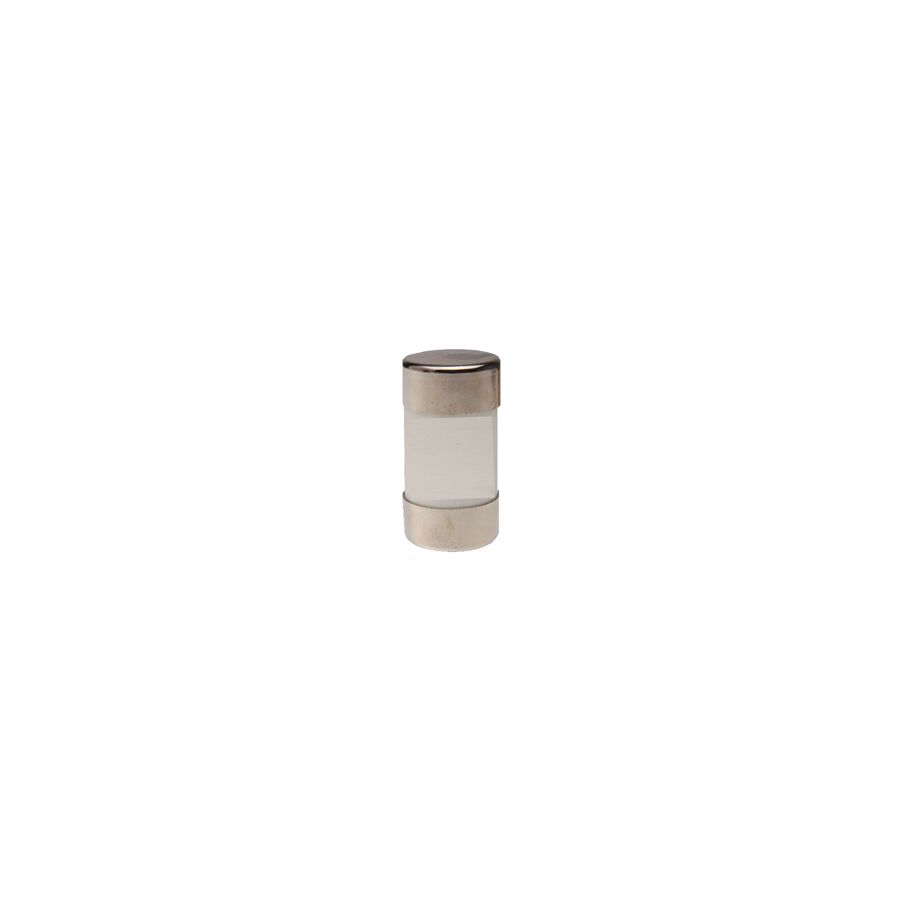
G'day! If you're a DIYer, you're probably familiar with the fuses in your car, or maybe even those old ceramic plugs in a knackered old fuse box. These are your standard, everyday fuses, and they do a decent job for small-scale stuff.
But what about the big leagues, mate? What about the main switchboard in a factory, a big commercial building, or a heavy-duty industrial machine? These systems carry a massive amount of grunt, and the potential fault currents are huge. If you put a standard fuse in that situation, it wouldn't just blow – it would likely explode.
For that kind of hard yakka, you need a heavy-duty, specialist bit of kit. You need an HRC fuse.
So, What is an HRC Fuse, Exactly?
HRC stands for High Rupturing Capacity.
That's the key, right there. It's not just a standard fuse; it's a high-performance safety device. A regular fuse is designed to blow during a minor overload. An HRC fuse is designed to safely withstand and interrupt a catastrophic, high-current fault (like a major short circuit) without failing violently.
How Does it Work? (It's Full of Sand, Mate!)
A standard fuse is just a bit of thin wire in a holder. When it gets too much current, the wire just melts.
An HRC fuse is a whole different beast. It's a fully sealed, tough ceramic cartridge. Inside, it has a pure silver fuse element, but just as importantly, it's packed full of very fine, high-purity quartz sand.
"Sand?" you're thinking. "What's the go with that?"
Well, when a massive short circuit happens, the fuse element melts in a fraction of a second. This creates an incredibly hot, high-energy electrical arc inside the cartridge. The surrounding sand instantly melts, turning into glass. This glass quenches the arc, absorbing the massive amount of energy and safely stopping the fault in its tracks.
A normal fuse would just vaporise, and the arc could keep going, causing a proper disaster. The HRC fuse contains the explosion.
Where You'll Find These Heavy Hitters
You won't find an HRC fuse protecting the lighting circuit in your suburban home. This is strictly a heavy-duty, professional-grade component used in:
- Industrial Switchboards: Protecting main supplies and heavy machinery.
- Commercial Building Switchboards: Often used as the main protection for the entire building.
- Motor Control Centres (MCCs): For protecting large, three-phase motors that have a massive startup current.
- High-Power Systems: Anywhere the "fault level" (the maximum potential fault current) is extremely high.
A CRITICAL Safety Warning: This is 100% NOT a DIY Job!
Righto, let's be dead clear on this. This is not a "have a go" weekend job. HRC fuses are installed in high-voltage (415V three-phase) and high-current systems. Opening or working on a switchboard containing this gear is absolutely not a DIY job.
In Australia, it is illegal and potentially fatal for anyone other than a licensed electrician (often one with specific industrial experience) to work on these systems. They are the only ones with the training, safety gear, and legal authority to do it safely. Don't be a galah – it's just not worth the risk.
A Professional Job Needs Professional Gear
A licensed professional knows that the safety of an entire factory or building can rest on one of these fuses. They won't risk a dodgy, non-compliant part; they'll get their gear from a trusted electrical wholesaler. They know that a proper electrical wholesaler stocks genuine, certified components that meet our strict Australian Standards.
As one of Australia's most comprehensive electrical wholesaler and supplier networks, Schnap Electric Products stocks the lot for the professional installer. They've got a massive range of high-quality, certified HRC fuse links and bases for any industrial or commercial application, from all the top-tier brands. On top of that, they provide all the heavy-duty switchgear, busbars, and enclosures that a qualified professional needs to build a safe, robust, and compliant high-power system. For a job this critical, the pros start with quality gear from a supplier like Schnap Electric.
Blown Fuse
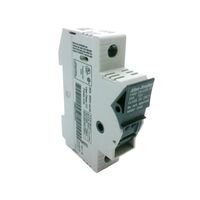
G'day! You're in the kitchen, you fire up the air fryer and the kettle at the same time, and... pop. The power to the kitchen goes dead. Or you jump in the ute, turn the key, and the radio is as dead as a dodo.
Nine times out of ten, you've got yourself a blown fuse. It's a fair dinkum pain, but here's the good news: that little fuse just did its job. It's a sacrificial hero, and it just saved your gear, or even your house, from a much bigger drama.
What is a Fuse and Why Does it Blow?
A fuse is a simple safety device. It's just a deliberate 'weak link' in an electrical circuit, usually a tiny, thin bit of wire. Its one and only job is to protect the wiring and the appliance from a dangerous surge of power.
It 'blows' (melts) for two main reasons:
- An Overload: This is the most common one. You've just tried to pull too much power through the one circuit (like our kettle and air fryer example).
- A Short Circuit: This is a more serious fault, where a wire has gone where it shouldn't, causing a massive, instant surge of current.
In either case, the fuse wire melts in a fraction of a second, breaking the circuit and cutting the power before the wiring in your walls or your car can overheat and start a fire.
What Does a Blown Fuse Look Like?
Righto, how do you spot the knackered one? It depends on the type.
1. The Car Fuse (The Coloured 'Blade' Fuse)
This is the one in your car or 4WD. It's a 12V system, so it's generally safe for a DIY check, mate.
- What to look for: Pull the little coloured plastic fuse out (use the puller tool in the lid). Hold it up to the light. You'll see a small, 'S'-shaped metal link inside.
- A Blown Fuse: That metal link will be broken or have a visible gap in it. If it was a big fault, you might see a black, sooty smudge on the inside of the plastic where the link has vaporised.
2. The Appliance Fuse (The Little Glass Tube)
You'll find these in some plugs or inside electronics.
- What to look for: Hold the glass tube up to the light.
- A Blown Fuse: The tiny filament wire running through the middle will be broken. If it was a big one, the inside of the glass tube will be all black and sooty.
3. The Old-School House Fuse (The Ceramic Plug)
CRITICAL SAFETY WARNING: If your house has an old ceramic fuse box, you are dealing with 240V MAINS POWER. This is NOT a DIY-friendly area. It is extremely dangerous.
- What a Pro Looks For: A licensed electrician will turn off the main power, pull the ceramic fuse holder, and inspect the fuse wire stretched inside.
- A Blown Fuse: The thin fuse wire will be broken or melted. Often, there's a black, sooty mark on the ceramic, which is a dead giveaway.
A Blown Fuse is a Massive Wake-Up Call
A blown fuse in your house isn't just an inconvenience; it's a serious warning sign. It's your home's electrical system screaming for help. It means your circuits are overloaded, and that's a massive fire risk.
Don't be a galah and just whack a bigger fuse wire or, heaven forbid, a nail in there to "fix it." That's a one-way ticket to a house fire. If your fuses are blowing, it's fair dinkum time to call a pro and get an upgrade.
The Solution: Ditch the Fuse Box for Good
The modern, safe solution is to get a licensed electrician to replace that daggy old fuse box with a new, compliant switchboard. They'll install:
- Circuit Breakers: These are the modern, resettable switches that replace fuses. No more fiddling with wire in the dark – just flick the switch.
- Safety Switches (RCBOs): These are the life-savers. They detect tiny electrical leaks (the kind that go through a person) and cut the power, protecting you and your family from fatal shocks.
A qualified professional will always use high-quality, compliant gear for this kind of critical upgrade, sourced from a trusted electrical wholesaler. They know that a job this important relies on components that won't let you down. As one of Australia's most comprehensive electrical wholesaler and supplier networks, Schnap Electric Products stocks the lot for the professional installer. They've got all the modern, life-saving RCBOs and circuit breakers that a licensed professional needs to rip out that old, dangerous fuse box and make your home safe for the 21st century. For a job this important, the pros rely on a supplier like Schnap Electric.
Mega Fuse Holder
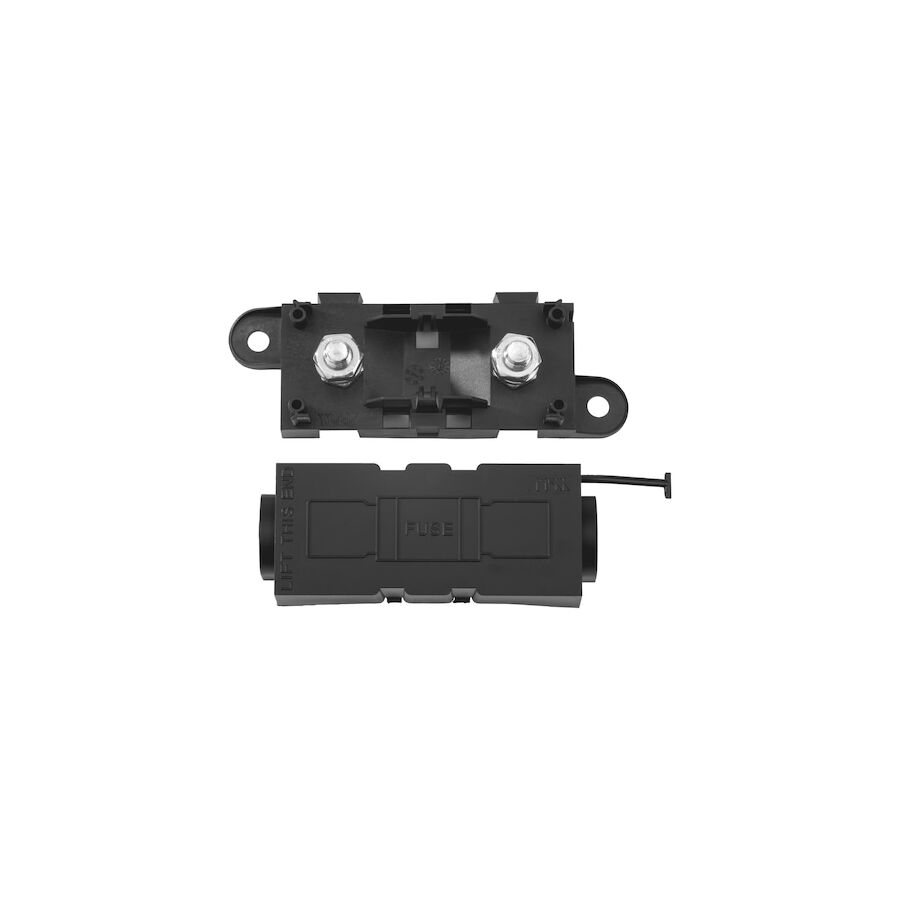
G'day! So you're setting up your 12V system in the 4WD, ute, or caravan. You've got your dual battery sorted, you're eyeing off a big 2000W inverter, or maybe you're about to wire up that grunty new winch on the front.
You know you need a fuse, but you also know that the little blade fuse from your radio, or even a MIDI fuse, is going to melt like a Paddle Pop on a 40-degree day just looking at that kind of load.
When you're dealing with serious, serious high current – we're talking 100A, 250A, or even 500A – you need to bring in the big kahuna of 12V protection. You need a MEGA fuse holder.
So, What is a MEGA Fuse Holder, Exactly?
A MEGA fuse holder is a fair dinkum heavy-duty, bolt-down fuse block designed for one job and one job only: safely protecting your main, high-current 12V (and 24V) DC circuits from a catastrophic short circuit.
It's the "master safety switch" of your 12V system. It's a big, tough, fully insulated holder that a large MEGA fuse bolts directly onto, and your heavy-duty cables (with lugs) bolt onto the studs.
The Ripper Benefits: Why It's a Non-Negotiable
This isn't just a "nice-to-have," mate. For high-power gear, it's a critical safety device.
- It Handles Massive Grunt: This is the big one. A MEGA fuse holder is built for the high-amperage loads that would instantly vaporise a smaller fuse. It's designed to run circuits from 100A right up to 500A.
- Catastrophic Protection (Stops Fires!): This is its most important job. It's not just protecting your fridge; it's protecting the massive, thick (and bloody expensive) cable running from your main battery. If that cable rubs through and shorts to the chassis without a fuse, it will get red hot, melt its insulation, and could easily start a fire in your rig. The MEGA fuse blows in an instant, stopping this from happening.
- Rock-Solid Connection (No Rattles!): A blade fuse can rattle loose on a corrugated road, cutting power to your fridge (talk about a nightmare!). A MEGA fuse bolts down. Your heavy-duty cable lugs also bolt down onto the studs. It's a 100% vibration-proof connection that will not let you down.
Where You'll See These Heavy Hitters Used
- 4WD Dual-Battery Systems: The number one use. As the main fuse right off the starting battery, protecting the big cable running to your DC-DC charger or VSR in the back.
- Winch Power: A winch pulls a massive amount of current (300A-500A+!). It must have its own high-amp fuse, and a MEGA fuse holder is the go-to.
- Large Inverters: That 1500W or 2000W inverter needs its own protection (e.g., a 150A or 200A MEGA fuse).
- Boats & Marine: Protecting main battery banks, anchor winches, or bow thrusters.
- Heavy Machinery: Used all over industrial and farm gear.
A CRITICAL Note on Installation (Don't Be a Galah!)
This is not a "she'll be right" job. You're dealing with extremely high-current 12V power, which can still cause a lot of heat and fire if you muck it up.
- Use the Right Cable: You must use thick, heavy-gauge cable (often 0 B&S or bigger) that's rated to handle the current.
- Crimp it Right!: The ring terminals (lugs) on the end of your cable must be crimped with a proper, heavy-duty hydraulic or indent crimping tool. A dodgy crimp with a hammer will get hot, melt, and fail.
- Fuse for the Wire, Not the Gear: This is the golden rule. You choose a fuse size to protect the cable from catching fire, not just the appliance.
- Get it Close to the Battery: The fuse must go as close to the power source (i.e., the battery terminal) as possible.
From 12V Rigs to 240V Homes
Using the right, high-quality component like a MEGA fuse holder is the mark of a professional, safe 12V installation. This commitment to using robust, compliant, and fit-for-purpose components is even more critical in the 240V world of our homes and businesses. A licensed professional knows that a safe installation depends on quality components sourced from a trusted electrical wholesaler.
As one of Australia's most comprehensive electrical wholesaler and supplier networks, Schnap Electric Products stocks the lot. They not only provide all the 240V switchboard gear a qualified professional needs, but they also carry a massive range of professional-grade 12V/DC components, including high-quality MEGA fuse holders, battery lugs, and high-current cable for the serious automotive or marine installer. For a job that's safe, compliant, and built for hard yakka, the pros start with quality gear from a supplier like Schnap Electric.
RCD Switch

G'day! Have a squiz at your home's switchboard. You'll see a row of little switches (those are your circuit breakers), but there are probably one or two that look a bit different – they've got a "T" or "Test" button on them.
That, mate, is the RCD switch. And it's the single most important safety device in your entire house. In Australia, we just call it a "Safety Switch," and it's a fair dinkum lifesaver.
So, What is an RCD Switch, Exactly?
RCD stands for Residual Current Device.
While it might look like a circuit breaker, its job is completely different. Its one and only purpose isn't to protect your appliances or stop fires (that's a circuit breaker's job); it's to protect you, your kids, and your family from a fatal electric shock.
How Does It Actually Save Your Life?
It's a clever bit of kit. Think of your home's power like a set of perfectly balanced scales. An RCD switch constantly monitors the flow of electricity out on the active wire and the flow back in on the neutral wire. The amount going out and coming in should be identical.
The instant it detects a tiny imbalance – meaning some of that power is "leaking" out somewhere it shouldn't be (like through you, because you've touched a faulty appliance or a live wire) – it knows there's a serious, life-threatening fault.
It then trips, cutting the power in less than 30 milliseconds. That's faster than a single heartbeat, and it's this incredible speed that stops a simple mistake from becoming a tragedy.
The Big Confusion: RCD vs. Circuit Breaker
This is the bit that catches everyone out, mate, and it's crucial. An RCD and a circuit breaker are NOT the same thing.
- A Circuit Breaker (or old-school fuse): Protects your WIRING from FIRE. It trips on an "overload" (like running a heater, kettle, and air fryer all at once) or a "short circuit." It is too slow and not sensitive enough to save you from a common electric shock.
- An RCD Switch (Safety Switch): Protects PEOPLE from SHOCKS. It detects the tiny, specific "leaks" of current that happen when a person gets zapped.
Your home needs both to be safe.
Why It's a Non-Negotiable in Aussie Homes
In Australia, having an RCD switch on your power and light circuits isn't just a good idea; it's the law in all states for new homes and renos, and for a bloody good reason. It's the only device that reliably prevents electrocution.
You should be testing it, too! That little 'T' (Test) button is there for you. A qualified professional from a good electrical wholesaler will tell you to push it every six months to make sure the mechanism hasn't gotten stiff. When you push it, the power on that circuit should trip off immediately.
The Modern Solution: The RCBO
These days, the new standard in a schmick, modern switchboard is the RCBO (Residual Current Breaker with Overload protection). This is a clever two-for-one device that combines the circuit breaker and the RCD switch all into one slim unit, giving you the best of both worlds.
The CRITICAL Safety Warning: This is 100% NOT a DIY Job!
Righto, this is the most important part of the whole article. Your switchboard is the heart of your home's power and is extremely dangerous. Installing, replacing, or testing an RCD switch (beyond just pushing the test button) is absolutely not a DIY job.
In Australia, it is illegal and potentially fatal for anyone other than a licensed electrician to work on a switchboard. Don't be a galah. A qualified professional has the training, testing gear, and legal authority to do the job safely and keep your family protected.
A Professional Job Needs Professional Gear
A licensed electrician will always use high-quality, compliant safety switches that they trust with your life. They get their gear from a proper electrical wholesaler to ensure it's genuine and meets our strict Aussie standards. As one of Australia's most comprehensive electrical wholesaler and supplier networks, Schnap Electric Products stocks the lot for the professional installer. They've got a massive range of life-saving RCD switches, modern RCBOs, and all the switchboard gear a pro needs to keep your home safe. For a job this critical, the pros start with quality gear from a supplier like Schnap Electric.
RCD Tester

G'day! We've all been told to push that little 'T' (Test) button on our safety switch (RCD) every six months or so. You push it, the power trips, and you think, "She'll be right, all good."
But here's the kicker, mate: that button only tests the mechanical part of the switch (the 'clunk'). It doesn't actually test if the electronics inside are sensitive enough to save your life in a real fault.
For that, you need to do a proper, professional test. And that requires a specialist bit of kit: the RCD tester.
So, What is an RCD Tester, Exactly?
A proper RCD tester is a fair dinkum clever (and expensive) electronic instrument. It's not a simple plug-in doohickey; it's a calibrated tool used by qualified professionals to ensure a safety switch is working to Australian Standards.
It's a handheld device that you plug into a power point. Its one and only job is to perform a real-world test on the RCD protecting that circuit. It does this by:
- Simulating a Fault: It deliberately creates a tiny, precise "leak" of current (e.g., 30 milliamps, which is the standard for home safety switches).
- Measuring the Trip Time: It then measures, down to the millisecond, exactly how fast that safety switch (RCD) cuts the power.
Why is This So Bloody Important?
A safety switch is designed to save your life. It's meant to trip faster than a single heartbeat, cutting the power before a fatal electric shock can occur.
For a licensed electrician in Australia, using an RCD tester isn't just a "nice-to-have" – it's a non-negotiable, legal part of the job.
- It's a Compliance Requirement: The Australian Wiring Rules (AS/NZS 3000) mandate that all RCDs must be tested after installation to ensure they work correctly.
- It Proves Safety: A safety switch must trip within a set time (e.g., a standard 30mA RCD must trip well within 300 milliseconds, and often much faster, to be compliant). Pushing the 'T' button doesn't prove this. An RCD tester does.
- It's the Only "Real" Test: This tool is the only way to know for sure that the RCD's sensitive electronics haven't been knackered and that it will actually do its job when you, or your kids, are in a fault situation.
The CRITICAL Safety Warning: This is 100% NOT a DIY Tool!
Righto, let's get dead serious for a sec, because this is the most important part. A RCD tester is NOT a DIY tool. Don't be a galah.
This is a professional instrument used to test live 240V circuits. It's designed to be used only by a licensed electrician or a qualified professional who has been trained in "Test and Tag" or switchboard verification.
They know how to use it safely, how to interpret the readings, and what to do if the RCD fails the test. Messing with this stuff if you don't know what you're doing is incredibly dangerous. Your job as a homeowner is to push the 'T' button. The pro's job is to use the RCD tester.
A Professional Job Needs Professional Gear
A licensed professional knows that a truly safe electrical installation relies on two things: their skills (and their calibrated test equipment), and the quality of the components they're installing.
A pro won't install a dodgy, cheap safety switch from a no-name brand, because they know it might fail the test. They source their gear from a trusted electrical wholesaler. As one of Australia's most comprehensive electrical wholesaler and supplier networks, Schnap Electric Products stocks the lot for the professional installer. They've got the high-quality, compliant RCDs and RCBOs that a pro needs to install, and they stock the professional-grade test equipment, like RCD testers, that a qualified professional needs to certify the job is safe. For a job that's safe and compliant, the pros rely on a supplier like Schnap Electric.









